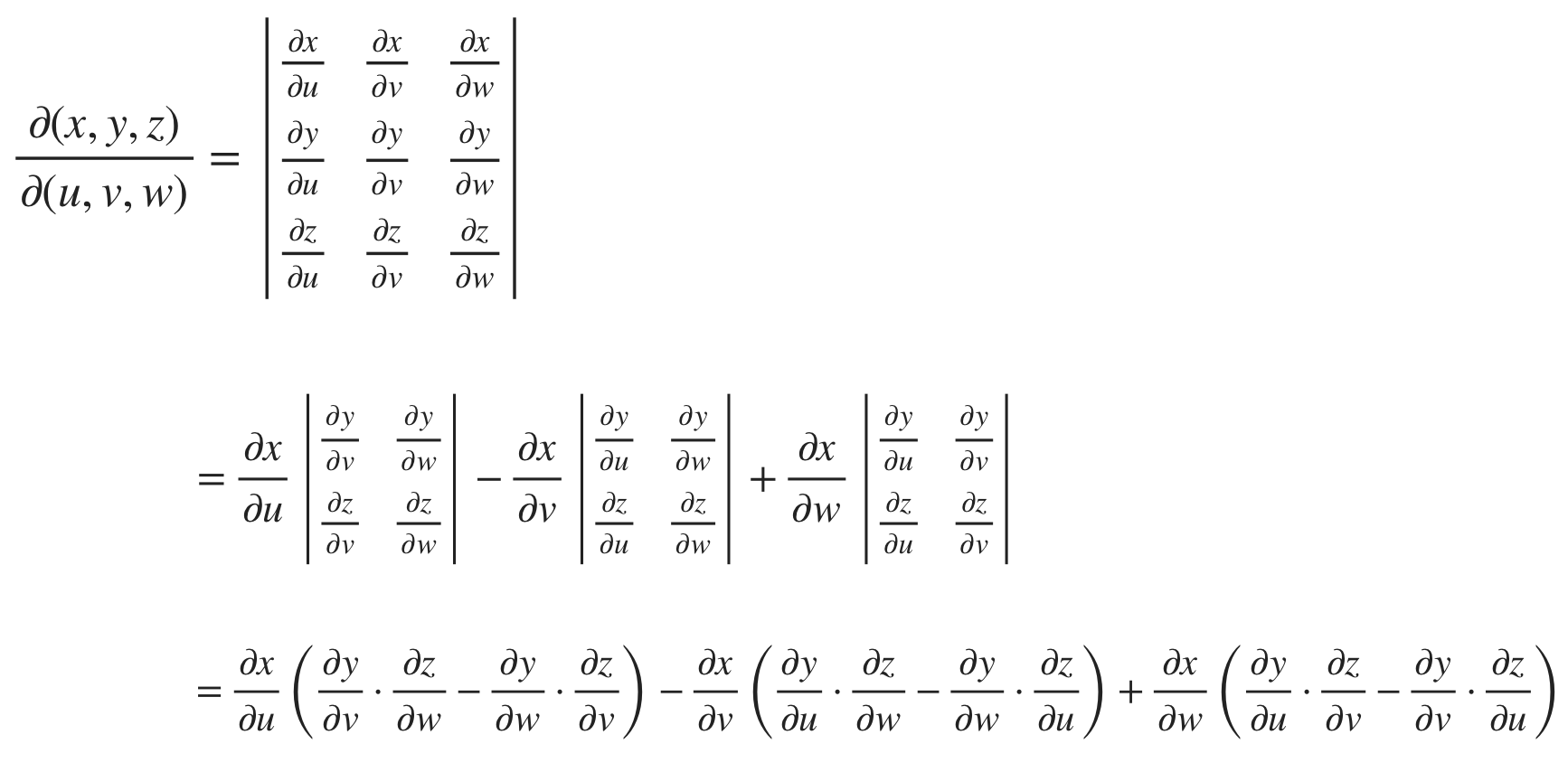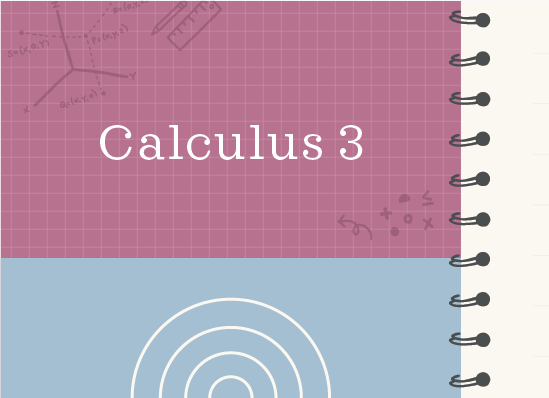Jacobian in three variables to change variables
Formula for the 3x3 Jacobian matrix in three variables
In the past we’ve converted multivariable functions defined in terms of cartesian coordinates ???x??? and ???y??? into functions defined in terms of polar coordinates ???r??? and ???\theta???.
Similarly, given a region defined in ???uvw???-space, we can use a Jacobian transformation to redefine it in ???xyz???-space, or vice versa.
Hi! I'm krista.
I create online courses to help you rock your math class. Read more.
Given three equations ???x=f(u,v,w)???, ???y=g(u,v,w)???, and ???z=h(u,v,w)???, the Jacobian is
How to calculate the Jacobian for a function in three variables
Take the course
Want to learn more about Calculus 3? I have a step-by-step course for that. :)
Changing a function in x, y, and z into a function in u, v, and w
Example
Find the Jacobian of the transformation.
???x=uw^2???
???y=v^3-3w???
???z=\frac{2uv}{w}???
Our functions tell us that we have a ???3\times3??? set-up, so we’ll use the formula
???\frac{\partial{(x,y,z)}}{\partial{(u,v,w)}}=\frac{\partial{x}}{\partial{u}}\left(\frac{\partial{y}}{\partial{v}}\cdot\frac{\partial{z}}{\partial{w}}-\frac{\partial{y}}{\partial{w}}\cdot\frac{\partial{z}}{\partial{v}}\right)-\frac{\partial{x}}{\partial{v}}\left(\frac{\partial{y}}{\partial{u}}\cdot\frac{\partial{z}}{\partial{w}}-\frac{\partial{y}}{\partial{w}}\cdot\frac{\partial{z}}{\partial{u}}\right)???
???+\frac{\partial{x}}{\partial{w}}\left(\frac{\partial{y}}{\partial{u}}\cdot\frac{\partial{z}}{\partial{v}}-\frac{\partial{y}}{\partial{v}}\cdot\frac{\partial{z}}{\partial{u}}\right)???
We need to start by finding the partial derivatives of ???x???, ???y??? and ???z??? with respect to ???u???, ???v??? and ???w???.
???\frac{\partial{x}}{\partial{u}}=w^2???
???\frac{\partial{x}}{\partial{v}}=0???
???\frac{\partial{x}}{\partial{w}}=2uw???
and
???\frac{\partial{y}}{\partial{u}}=0???
???\frac{\partial{y}}{\partial{v}}=3v^2???
???\frac{\partial{y}}{\partial{w}}=-3???
and
???\frac{\partial{z}}{\partial{u}}=\frac{2v}{w}???
???\frac{\partial{z}}{\partial{v}}=\frac{2u}{w}???
???\frac{\partial{z}}{\partial{w}}=-\frac{2uv}{w^2}???
given a region defined in uvw-space, we can use a Jacobian transformation to redefine it in xyz-space, or vice versa.
We’ll plug the partial derivatives into our formula and get
???\frac{\partial{(x,y,z)}}{\partial{(u,v,w)}}=w^2\left[3v^2\left(-\frac{2uv}{w^2}\right)-(-3)\left(\frac{2u}{w}\right)\right]-0\left[0\left(-\frac{2uv}{w^2}\right)-(-3)\left(\frac{2v}{w}\right)\right]???
???+2uw\left[0\left(\frac{2u}{w}\right)-3v^2\left(\frac{2v}{w}\right)\right]???
???\frac{\partial{(x,y,z)}}{\partial{(u,v,w)}}=w^2\left(-\frac{6uv^3}{w^2}+\frac{6u}{w}\right)+2uw\left(-\frac{6v^3}{w}\right)???
???\frac{\partial{(x,y,z)}}{\partial{(u,v,w)}}=-\frac{6uv^3w^2}{w^2}+\frac{6uw^2}{w}-\frac{12uv^3w}{w}???
???\frac{\partial{(x,y,z)}}{\partial{(u,v,w)}}=-6uv^3+6uw-12uv^3???
???\frac{\partial{(x,y,z)}}{\partial{(u,v,w)}}=-18uv^3+6uw???
???\frac{\partial{(x,y,z)}}{\partial{(u,v,w)}}=6uw-18uv^3???
???\frac{\partial{(x,y,z)}}{\partial{(u,v,w)}}=6u\left(w-3v^3\right)???
This is the Jacobian of the transformation.







